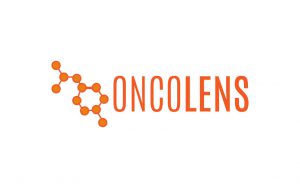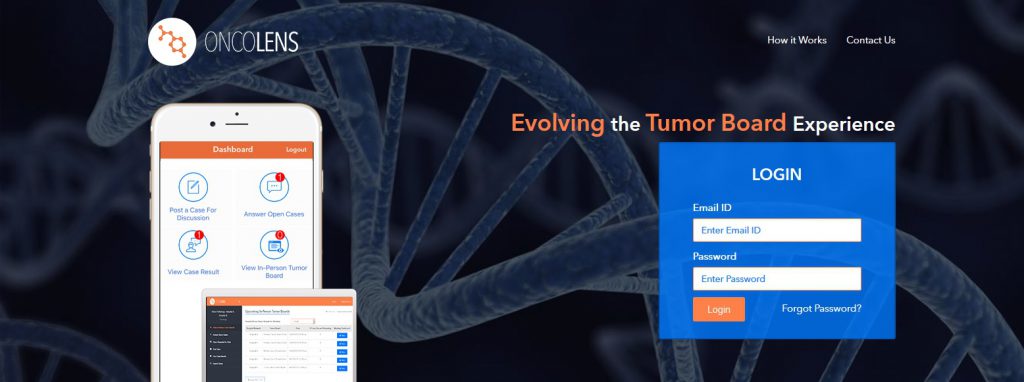How a Community Based Cancer Center Took the Leap Into the 21st Century Through Technology Backed Tumor Boards
 Multi-disciplinary tumor boards (MDT) have been the highlight of cancer programs for years and enable the delivery of well-coordinated care and bring the expertise of numerous specialties to each patient case. Previous studies have shown that 40% of the time, the primary oncologist or provider’s plan changes as a result of this multi-disciplinary discussion. There are associations with better survival and increased participation in clinical trials for providers who participate in MDT’s As a result conducting MDT’s is an integral part of the Commission on Cancers (CoC) and National Accreditation Program for Breast Centers (NAPBC) criteria to select high quality Cancer Programs.
Multi-disciplinary tumor boards (MDT) have been the highlight of cancer programs for years and enable the delivery of well-coordinated care and bring the expertise of numerous specialties to each patient case. Previous studies have shown that 40% of the time, the primary oncologist or provider’s plan changes as a result of this multi-disciplinary discussion. There are associations with better survival and increased participation in clinical trials for providers who participate in MDT’s As a result conducting MDT’s is an integral part of the Commission on Cancers (CoC) and National Accreditation Program for Breast Centers (NAPBC) criteria to select high quality Cancer Programs.
Multi-disciplinary tumor boards (MDT) have been the highlight of cancer programs for years and enable the delivery of well-coordinated care and bring the expertise of numerous specialties to each patient case. Previous studies have shown that 40% of the time, the primary oncologist or provider’s plan changes as a result of this multi-disciplinary discussion. There are associations with better survival and increased participation in clinical trials for providers who participate in MDT’s As a result conducting MDT’s is an integral part of the Commission on Cancers (CoC) and National Accreditation Program for Breast Centers (NAPBC) criteria to select high quality Cancer Programs.
The CoC standards require that at least 15% of Cancer Cases be discussed at Tumor Boards and at least 80% of cases should be prospective. The NAPBC Breast Cancer Standards require that MDT’s be held every week or two weeks and at least 85% of the cases be discussed prospectively. Various elements of the Tumor Boards have to be reported to the COC and NAPBC to maintain accreditation. However, the process of running a tumor board is not standardized and it is also an inefficient one involving several manual and redundant data collection tasks that typically fall on the shoulders of a cancer registrar or a nurse navigator. Cases are discussed via PowerPoint, and what is discussed is dependent on what the providers in the room remember to discuss.
In a rapidly evolving discipline like Oncology several aspects of each case needs to be discussed including Molecular Pathology, Complex test interpretation (Cancer Risk Scores like Oncotype Dx™ Next Generation Sequencing test results like Foundation One™), Clinical Trials, Palliative Care and patient specific navigation issues to help select the best possible care plan. These core elements are often missing from most discussions and need to be included.
In addition, it takes on average of 10 hours or more of upfront preparation for each individual tumor board. This includes obtaining the cases for tumor boards, creating an agenda; manually sending these details over to Radiology and Pathology. Then there is the time needed to run the conference and collect the data needed for the CoC and NAPBC accreditation. Cancer Centers typically run multiple Cancer Conferences a week. The Commission on Cancer will soon be adding accreditation programs for colo-rectal cancer and genitourinary cancers. This will add to the work load of already over worked Cancer Centers.
The institution thus decided to implement OncoLens™. The goal was to bring operational efficiency and standardization to the case collaboration process in tumor boards but also automatically remind providers of key quality standards and clinical decision support criteria like available clinical trials specific for the patient. We are able to discuss cancer specific molecular abnormalities like EGFR, ALK and ROS1 in the right setting (metastatic lung adenocarcinoma) thus enabling high quality discussions on every patient. Using OncoLens™ deployed a year ago at DeKalb Medical in Atlanta GA, we have observed a reduction in the CTR time by 90%, and they can return to their abstracting duties. There has been an increase in the number of cases being discussed. Our staff member participation especially clinical trials, genetics and palliative care has increased. Our nurse navigators utilize this platform now for the discussion of incidentally diagnosed lung nodules and reduced the time to treatment from 14 days to 2 days. There has been easy adoption of this platform buy the Pathologists and Radiologists and they prefer to run Cancer Conferences this way. As CoC requirements and related costs increase over time, having a platform that automates tasks and eliminates cost helps cancer centers achieve and maintain their accreditation goals.
Various aspects of the OncoLens™ platform have been presented in abstract and paper format and is referenced below.
To learn more about the OncoLens™ platform, visit www.oncolens.com or email support@oncolens.com
Abstracts and Publications:
- Navigating the pathways to early diagnosis and better patient outcomes – Oncology nurse advisor navigation summit, June 2017, Austin TX
- Benefits of implementing an automated cancer conference workflow –Exceptional Poster Award, Oncology Nurse & Patient Navigators Conference, Nov 2017, Orlando FL
- Cancer conference automation case study- Journal of Registry Management, National Cancer Registrars Association, Expected winter 201
Source: OncoLens and DeKalb Medical Center
Comments (2)
Drew Begg Lijo Simpson Tumor Boards are ripe for innovation. Technology solutions like OncoLens help reduce the workload around Tumor Boards, reduce cost, help discuss more cases and increase the quality of discussions.


































Medical efficiency solutions are becoming a necessity to meet increased demand at lower costs; it will be interesting to see how other centers react to the same need. Innovation will be the driving force for many more solutions to come.